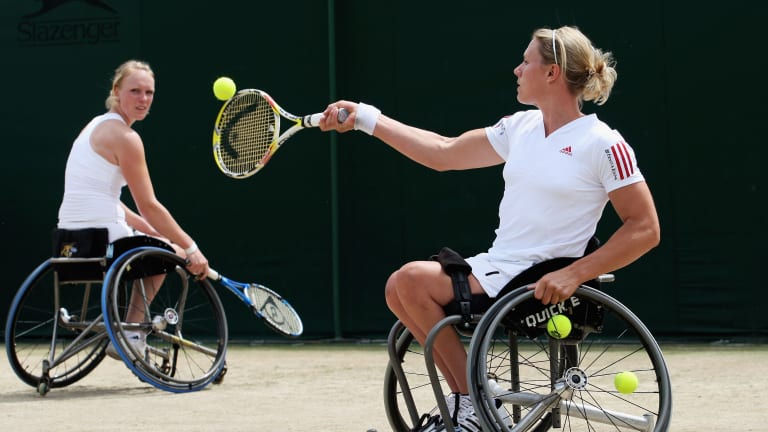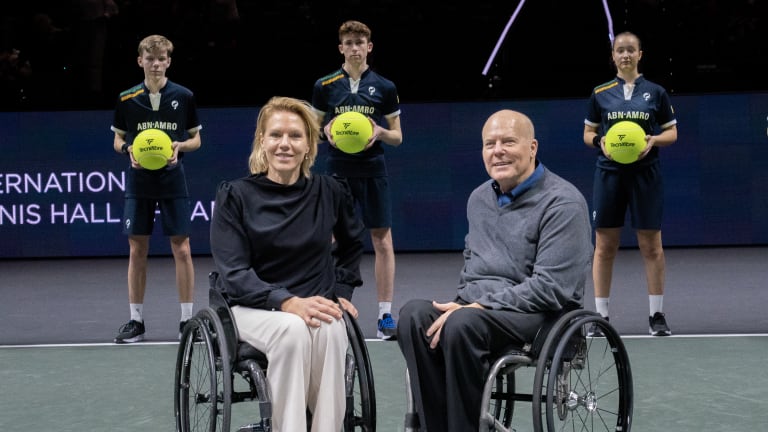International Tennis Hall Of Fame
Esther Vergeer's road to Newport didn't include a Wimbledon singles title—through no fault of her own
By Jul 18, 2023International Tennis Hall Of Fame
Mary Carillo joins Roger Federer with election into International Tennis Hall of Fame
By Nov 19, 2025International Tennis Hall Of Fame
Roger Federer, Juan Martin del Potro lead 2026 nominees for the International Tennis Hall of Fame
By Oct 01, 2025International Tennis Hall Of Fame
Maria Sharapova, brothers Bob and Mike Bryan inducted into International Tennis Hall of Fame
By Aug 24, 2025International Tennis Hall Of Fame
"Surprise!" Serena Williams introduces Maria Sharapova at International Tennis Hall of Fame induction ceremony
By Aug 23, 2025International Tennis Hall Of Fame
Bob and Mike Bryan made music on and off the tennis court
By Aug 20, 2025International Tennis Hall Of Fame
Maria Sharapova was all business, no matter the medium
By Aug 20, 2025International Tennis Hall Of Fame
119 doubles titles, 16 Slams, Hall of Fame: How tennis’ legendary twins, Bob and Mike Bryan, did it all
By Aug 19, 2025International Tennis Hall Of Fame
Maria Sharapova's Hall of Fame induction is tennis royalty well-earned
By Aug 19, 2025International Tennis Hall Of Fame
International Tennis Hall of Fame launches “Be Legendary” youth program in Melbourne, Indian Wells and Miami
By Dec 05, 2024Esther Vergeer's road to Newport didn't include a Wimbledon singles title—through no fault of her own
The 21-time Grand Slam singles champion will be inducted alongside Rick Draney on a historic day at the Hall of Fame.
Published Jul 18, 2023
Advertising
Advertising

Vergeer won big at Wimbledon—but only in doubles. “I would have loved to play singles there,” she says. “I was convinced that I could do it, but the organization wouldn’t let me.”
© 2009 Getty Images
Advertising
Advertising
Advertising
Advertising

Vergeer and Draney will be the sixth and seventh wheelchair players inducted into the International Tennis Hall of Fame; never before have multiple wheelchair players been enshrined in the same year.
© Getty Images